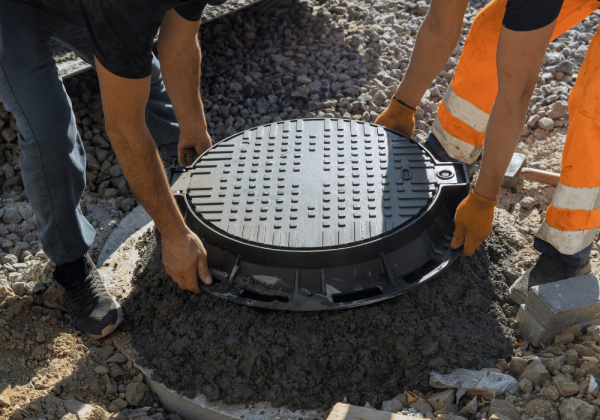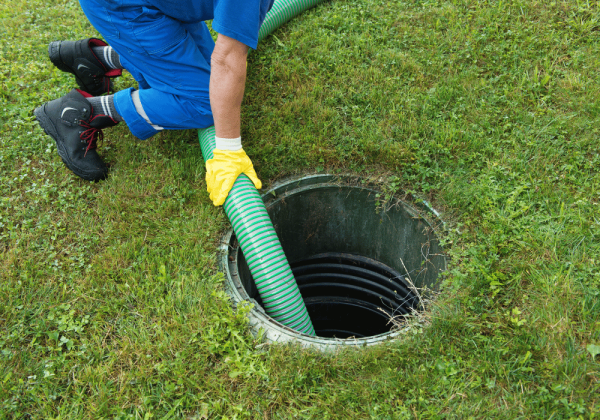A septic system might not be something you think about often, but if you’re a homeowner without access to a municipal sewer system, it’s a vital piece of infrastructure. A properly installed and maintained septic system ensures the safe treatment and disposal of wastewater, protecting both your property and the surrounding environment. Whether you’re building a new home or replacing an outdated system, understanding the fundamentals of residential septic systems is key to making informed choices. This blog dives deep into the essentials of septic system installations, covering the benefits of professional installation, the installation process, and why maintenance is critical.
Professional Installation Makes All the Difference
 When it comes to residential septic systems, professional installation is not just a preference but a necessity. While it might be tempting to cut costs by attempting a DIY installation or hiring a low-cost, uncertified installer, the risks far outweigh the savings. Improper installations can lead to significant problems, from system failure to groundwater contamination and hefty penalties for non-compliance with local regulations.
When it comes to residential septic systems, professional installation is not just a preference but a necessity. While it might be tempting to cut costs by attempting a DIY installation or hiring a low-cost, uncertified installer, the risks far outweigh the savings. Improper installations can lead to significant problems, from system failure to groundwater contamination and hefty penalties for non-compliance with local regulations.
Licensed professionals are well-versed in the stringent rules surrounding septic installations, including site evaluations, soil tests, and setback requirements. They ensure that your system is installed in compliance with these regional guidelines, reducing the chances of costly mistakes. Furthermore, professionals have access to the equipment and expertise necessary to tackle complex issues, such as challenging soil conditions or limited space on your property. Their experience ensures that every aspect of the installation, from tank placement to leach field design, is handled with precision.
Another critical advantage of hiring a professional is the quality of materials and craftsmanship. Certified installers work with durable, high-quality components that can withstand the pressures of daily use over many years. They also offer warranties on their work, providing peace of mind that if any issues arise, they will be addressed quickly and efficiently. Ultimately, professional installation is an investment in the longevity and efficiency of your septic system.
Demystifying the Installation Process
Understanding how a residential septic system is installed can give homeowners greater appreciation for the time and expertise involved in the process. The installation begins with a comprehensive site evaluation. During this phase, professionals assess the topography, soil type, and drainage capacity of your land to determine the ideal system design. For example, sandy soil may call for a larger leach field, while clay-rich soil might require specialized components to ensure proper drainage.
Once the site has been evaluated and permits obtained, excavation commences. This step involves clearing and digging areas for both the septic tank and the leach field. The tank acts as the primary treatment center, separating solids from liquids, while the leach field disperses treated water into the ground. Proper placement of these components is crucial to avoid environmental impact or interference with structures like wells and foundations.
Finally, the system is installed and connected to the home’s plumbing. This involves precisely placing the septic tank, creating trenches for the distribution pipes, and installing additional components like effluent filters, risers, or pumps as needed. Each part of the system is tested to ensure proper functionality, and the installation is completed with a layer of backfill soil or gravel to protect and cover the components. Homeowners often assume the process is straightforward, but the level of detail involved highlights why expertise is so important. Skipping even a single step or cutting corners can compromise performance and lead to expensive repairs down the road.
Choosing the Right Septic System for Your Property
Selecting the ideal septic system for your property involves considering several essential factors, including the size of your household, soil conditions, and local regulations. Residential septic systems are not one-size-fits-all, and choosing the wrong design could result in capacity issues, inefficiencies, or even environmental hazards. That’s why working with a seasoned professional who understands your specific site is so critical.
For small households with favourable soil conditions, a conventional system with a septic tank and gravity-fed leach field may suffice. However, properties with clay-heavy soil or areas prone to flooding may require specialized alternatives, such as mound systems or aerobic treatment units (ATUs). These systems are designed to improve drainage or speed up the decomposition of organic waste, offering effective solutions for challenging land conditions. Additionally, many modern setups come with advanced features like effluent filters or pumps to further optimize performance.
The size of your septic tank and leach field also matters. Tank capacity must align with the daily water usage of your household to prevent overflows or backups. A credible installer will calculate these factors based on the number of bedrooms in your home, water fixtures, and your family’s lifestyle. Furthermore, environmental considerations such as setbacks from wells, water bodies, or property lines play a crucial role in determining the size and layout of your system. Partnering with an experienced team ensures you receive a customized solution that balances performance, environmental responsibility, and regulatory compliance.
Why Regular Maintenance is Non-Negotiable
 Whether new or old, every septic system requires regular maintenance to function effectively and avoid costly repairs. Maintenance primarily involves pumping the septic tank every three to five years, though the exact frequency depends on your tank’s size and the volume of wastewater produced by your household. Over time, solid waste accumulates at the tank’s bottom, and if left unchecked, it can overflow into the leach field, causing blockages and contamination. Pumping ensures that waste is removed at proper intervals, keeping your system running smoothly.
Whether new or old, every septic system requires regular maintenance to function effectively and avoid costly repairs. Maintenance primarily involves pumping the septic tank every three to five years, though the exact frequency depends on your tank’s size and the volume of wastewater produced by your household. Over time, solid waste accumulates at the tank’s bottom, and if left unchecked, it can overflow into the leach field, causing blockages and contamination. Pumping ensures that waste is removed at proper intervals, keeping your system running smoothly.
Periodic inspections are equally critical. A professional inspection can detect potential issues, such as cracks, leaks, or root intrusion, before they escalate into major problems. Professionals also monitor the condition of effluent filters, pumps, and distribution pipes, ensuring they remain in optimal working order. Neglecting inspections can lead to unnoticed system failures, which are often costly and time-intensive to resolve.
Beyond regular pumping and inspections, homeowners should adopt practices that promote septic health. This includes avoiding the disposal of non-biodegradable items, limiting the use of harsh cleaning chemicals, and conserving water to prevent overloading the system. Educating your household about septic-friendly habits can significantly extend the life of your system. Ultimately, prioritizing maintenance not only safeguards the health of your property but also protects the surrounding environment from contamination.
Investing in a residential septic system is a significant decision requiring careful planning, professional expertise, and ongoing care. Whether you’re installing a new system, choosing the right design, or maintaining an existing one, Bowden Excavating is here to help. With decades of experience in septic system installations, we offer tailored solutions to ensure your property and the environment are well-protected.
If you’re ready to install a system or need professional guidance, contact us today. Our knowledgeable team is eager to answer your questions and provide a free consultation. At Bowden Excavating, we make septic systems simple, reliable, and efficient.

